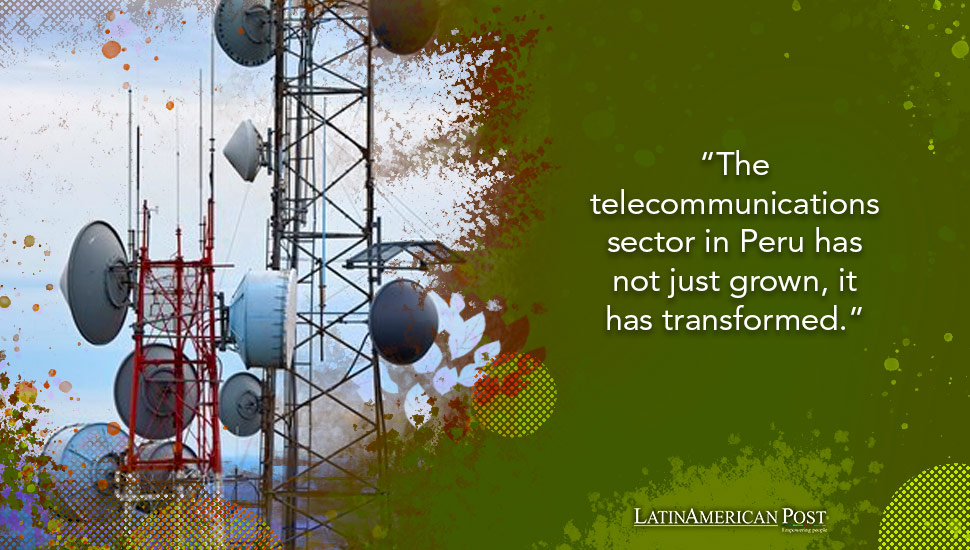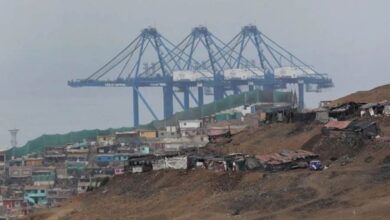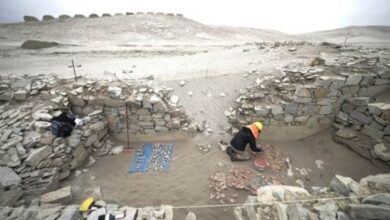Peru’s Telecommunications Boom: From Monopoly to Economic Driver

The telecommunications sector in Peru has grown from contributing 1.6% of GDP in 1994 to 5.1% in 2023, becoming a crucial driver for business, education, and employment, according to a report by the Peruvian Institute of Economics (IPE).
The telecommunications sector in Peru has not just grown, it has transformed. Over the past three decades, it has evolved from contributing a modest 1.6% to a significant 5.1% of the country’s GDP in 2023. This growth has not only positioned telecommunications as a vital engine for business development, education, and employment but also inspired a new wave of economic progress in Peru.
The IPE report highlights the sector’s productivity, noting that the GDP per worker in telecommunications was eleven times higher than that of the rest of the economy in 2023. Additionally, workers in the telecommunications sector earned incomes 78% higher than the average in other service sectors. This substantial impact is attributed to the sector’s direct contribution to GDP and its “cross-cutting” benefits across various areas of the economy, as emphasized by IPE General Manager Carlos Gallardo.
Gallardo explained to EFE that telecommunications have revolutionized business operations for small and medium-sized enterprises (SMEs), digital delivery platforms, and app-based taxi services. Beyond these visible sectors, telecommunications have also significantly impacted critical industries such as mining, which accounts for nearly 10% of Peru’s GDP, and agricultural applications.
Legislative Changes Paving the Way
The telecommunications boom in Peru began in 1990 following the repeal of a law that had established a state monopoly over the sector and prohibited private participation. This regulatory change allowed Telefónica to enter the Peruvian market in 1994 with an investment of $2.002 billion, marking a significant turning point for the country.
In 1994, the average waiting time for a telephone line was 3,540 days. By 1998, this had been reduced to just 16 days. The connection cost dropped dramatically, from $1,500 in 1993 to $170 in 1998. The number of workers in the sector increased from 13,000 in 1993 to 34,000 in 1998, and only three out of every 100 households had a telephone line in 1994.
“Before 1990, we had a state-run enterprise system. This changed in the 1990s with Telefónica’s entry, which enabled the mass adoption of various technologies,” Gallardo remarked during the report presentation.
The study also reveals that the telecommunications sector has generated 45.065 billion soles (approximately $11.8 billion) in tax revenue for the state and has seen nearly $20 billion in private investment projects over the last 22 years.
Elena Maestre, Executive President of Telefónica del Perú, noted that within four years of the company’s arrival, they had installed one million lines, and their efforts to enhance connectivity have continued unabated.
The Impact on Daily Life and Industry
The impact of the telecommunications sector in Peru is not just economic, it’s about improving the quality of life. It has made communication and access to information more accessible, transforming everyday life in Peru. This transformation is particularly evident in the rise of digital services and how businesses operate, giving us a glimpse of a more connected and convenient future.
Telecommunications have provided SMEs the tools to compete in a digital economy. E-commerce platforms, online marketing, and digital payment systems have opened new markets and streamlined operations. Similarly, the rise of digital delivery services and app-based taxis has created new business models, offering convenience to consumers and new income streams for entrepreneurs.
Telecommunications have facilitated advanced monitoring and operational efficiencies in the mining sector, which is critical for an industry that significantly contributes to the national economy. Using telecommunications in agriculture has improved productivity through better resource management and access to market information.
Ensuring Continued Growth
Looking forward, Gallardo emphasized that the evolution of the telecommunications sector over the past 30 years was not accidental but the result of substantial investment and policy efforts. “The sector’s future cannot be left to chance and requires a series of reforms,” he said. These reforms include expanding coverage, balancing quality and coverage, and optimizing the allocation of spectrum bands.
Strengthening the regulatory body is also crucial. Following the recommendations of the Organization for Economic Cooperation and Development (OECD), there needs to be a reevaluation of the functions and powers of the regulatory authority to ensure it can effectively oversee the sector’s growth and address emerging challenges.
The future of Peru’s telecommunications sector is not just about maintaining its growth trajectory; it’s about accelerating it. To do this, we must continue to innovate and adapt, leveraging new technologies like 5G to enhance service quality and expand reach, particularly in rural and underserved areas. Ensuring that the benefits of telecommunications are broadly distributed will be vital to sustaining economic development and improving quality of life.
The role of telecommunications in education has also been transformative. The COVID-19 pandemic underscored the importance of digital connectivity for remote learning. Expanding internet access and improving digital infrastructure in schools will be vital for future educational outcomes and ensuring that all students can succeed in a digital world.
The Peruvian government and private sector must work together to create an enabling environment for continued investment in telecommunications. This includes transparent and consistent regulatory policies, incentives for infrastructure development, and support for innovation and entrepreneurship in the digital economy.
Latin American Context and Regional Implications
Peru’s telecommunications success story is part of a broader trend in Latin America, where many countries recognize digital infrastructure’s critical role in economic development. Nations across the region are implementing reforms and investments to improve connectivity, driven by the need to compete in a global digital economy.
However, challenges still need to be addressed, including regulatory hurdles, investment gaps, and disparities in access between urban and rural areas. Sharing best practices and fostering regional collaboration can help address these issues and accelerate progress.
The regional context also highlights the importance of digital inclusion. Ensuring that all citizens, regardless of location or socio-economic status, have access to reliable and affordable telecommunications services is essential for equitable growth. Programs aimed at bridging the digital divide, such as community internet projects and subsidized access for low-income families, can play a significant role in achieving this goal.
As Latin American countries continue to develop their telecommunications sectors, the experiences of nations like Peru offer valuable lessons. The benefits of digital connectivity extend beyond economic growth, influencing education, healthcare, and social inclusion. By prioritizing investments in telecommunications and fostering a supportive regulatory environment, the region can unlock new opportunities for innovation and development.
Also read: Musical Featuring Inmates Highlights Drama and Resilience in Peruvian Prisons
The telecommunications sector in Peru has evolved from a state-run monopoly to a dynamic and critical component of the economy. Significant investments, regulatory reforms, and the tireless efforts of industry stakeholders have driven this transformation. As the sector grows, ensuring its sustainability and broad-based benefits will be essential for Peru’s future prosperity. The lessons learned from Peru’s experience can also inform broader efforts across Latin America to harness the power of telecommunications for economic and social progress.





